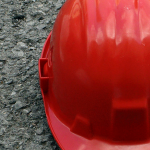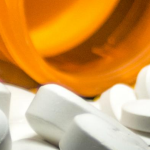NREMT Launches New Certification Examinations for Paramedics and AEMTs
From the National Registry of Emergency Medical Technicians
National Registry of Emergency Medical Technicians Launches New Certification Examinations for Paramedics and AEMTs
The examinations align the National Registry with other health-based professions while retaining the rigor needed for advanced-level Emergency Medical Services (EMS) clinicians.
(Columbus, Ohio) – Today, the National Registry of Emergency Medical Technicians launched new certification examinations for Paramedics and Advanced Emergency Medical Technicians (AEMTs), integrating new advancements in clinical practice, science, research, and technologies. These updates ensure that Paramedics and AEMTs are knowledgeable and prepared to manage emergency medical events.
“As the national certifying organization for emergency medical clinicians, it’s imperative that our examinations stay current with changes to our profession and evaluate candidates based on the best research and science available,” said Bill Seifarth, Executive Director at the National Registry. “Whenever someone calls 911, no matter where they are in the country, they trust that whoever arrives with the ambulance has the knowledge and skills to care for them. At the National Registry, we’re responsible for validating that trust by keeping our examinations up to date and ensuring all clinicians are competent to successfully respond to an emergency.”
To ensure the National Registry’s certification examinations measure current practice, the most recent National EMS Practice Analysis and its subsequent Addendum were conducted to identify the knowledge, skills, abilities, and clinical judgment required for entry-level clinician competency. This information, coupled with the feedback from the EMS community and continuous collaboration with the National Registry’s accreditor, the National Commission for Certifying Agencies (NCCA), formed the foundation for these new examinations.
“The new Paramedic and AEMT certification examinations incorporate current EMS practices and use innovative item types that leverage interactive technology to evaluate candidates’ knowledge and clinical judgment in diverse ways beyond traditional multiple-choice or multiple-response formats,” explained Dr. Mihaiela Gugiu, Chief Assessment Officer at the National Registry. “These enhancements ensure a unified and thorough assessment process for all certification seekers.”
The new examinations allow candidates to take a single comprehensive examination on one date, reducing logistical challenges while preserving the examinations’ rigor, consistent with standards in other health-based professions.
Additional information about the examinations can be found online at https://nremt.org/Document/Get-Ready-For-The-New-Examinations or by listening to or watching the National Registry’s recently launched podcast, Registry Insider.
###
HELPFUL LINKS
Online Press Release: nremt.org/News/National-Registry-of-Emergency-Medical-Technicians
New AEMT and Paramedic Certification Examination Information Page: nremt.org/Document/Get-Ready-For-The-New-Examinations
Registry Insider Vodcast (video); Episode 1 is all about the new examinations: nremt.org/Document/Registry-Insider
Registry Insider Podcast (audio); Episode 1 is all about the new examinations: registryinsider.buzzsprout.com


















